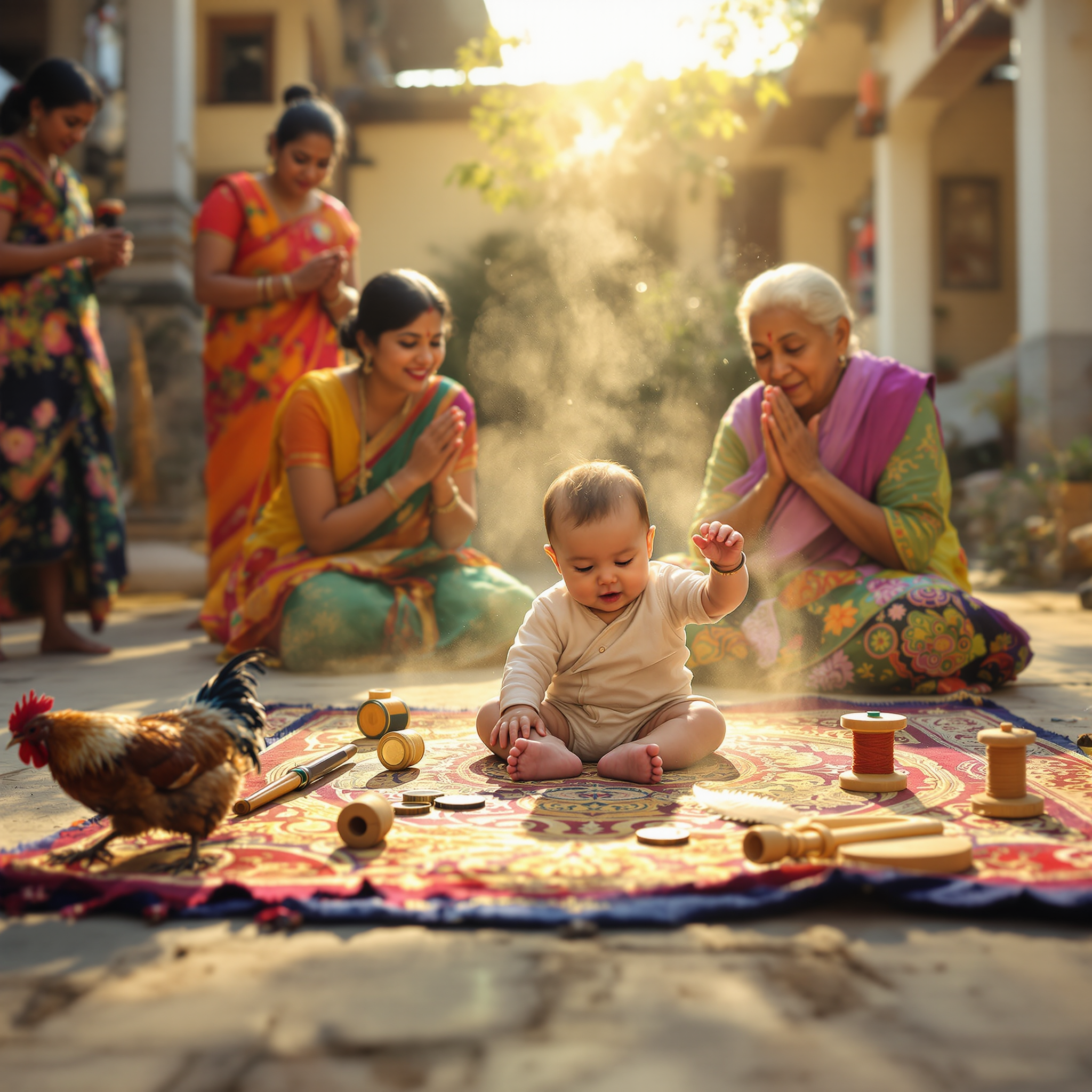This superstition emphasizes the importance of allowing older men—or elders in general—to sit down first at the table during communal meals. According to the belief, failing to observe this tradition may reduce the ‘productivity’ of the meal, often interpreted as its nutritional value, spiritual power, or symbolic blessing. The practice typically applies to family or communal gatherings and signifies a gesture of respect, rooted in hierarchical values associated with age and wisdom. The seated elder is seen not only as a moral authority but also as a conduit for transferring ancestral blessings to the rest of the gathered members. The act is often performed silently and automatically in traditional households, especially in rural or customary settings.

A baby’s future career or fate is predicted by the first object they select during a ceremonial setup.
In several Asian and Eastern European cultures, a traditional ceremony is held for babies usually around their first birthday. Known


